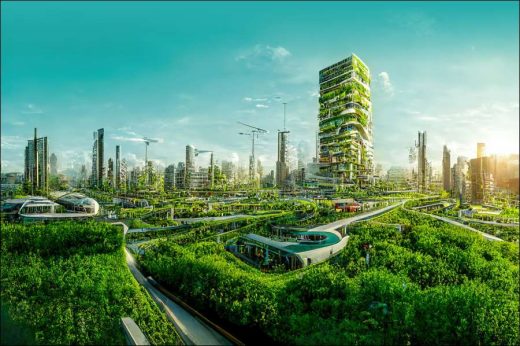Smart cities as utopia. In the article “The Smart City Is Perpetually Unrealized Utopia” published in MIT Technology Review in June 2022, Chris Salter talks about the smart city idea called New Babylon, shared by the Dutch artist Constant (Nieuwenhuys) in 1959.
Stating that Constant stated that today’s technology is advanced and the cities of the future will rise on this technology, Salter points out that New Babylon was never built. The article underlines that when it comes to smart cities, the first thing that comes to mind is technology and especially data-based steps; It conveys that people and human diversity remain in the background.
The many examples mentioned, which could be multiplied, are exciting but incomplete. Because it is easy to design a city and convey a way of life on paper. This is a world where relatively large-scale housing projects and shopping malls become idle over time and lose their appeal. However, it is quite difficult to ensure fluidity and continuity of technology and to prioritize values such as sustainability and efficiency.
At this point, perhaps what needs to be done is to put aside the idea of creating the cities of the future from scratch and focus on the cities we have today. Paris, where the 15-minute city concept was born, Berlin, which invites its startups to contribute to this vision, and Barcelona, which provides optimization by collecting data from all over the city, may be examples for us in this journey.
Scaling problem
On the other hand, the approach of creating a city from scratch draws attention in the prominent projects of the recent period. It is also noteworthy that these projects are generally too small in scale to be compared to a significant part of the world’s cities, and that they benefit from the latest technology.
Sustainable City, which has been implemented and is currently being lived in, is one of them. The project, built in Dubai, is designed to easily meet all the needs of its residents. In meeting these needs, practices that would best serve sustainability were preferred. In the project, which mainly utilizes solar energy, wastewater is recirculated so that it can be used in many areas, from agricultural areas to pools.
The project, which creates a positive atmosphere in all posts, has significant disadvantages seen both in itself and in its counterparts: The project appeals to people at high income levels. It does not seem possible for the project, which consists of 500 residential units where 2,700 people live, to be scaled to accommodate millions of people and appeal to different segments of the society.
It is also known that many important brands are turning to this field. However, the approach of these brands is different from the approach of governments and stakeholders of the construction industry. Toyota is one of the important brands that has taken steps on this issue and the difference in approach is clearly visible.
The brand plans to both test smart city life and create a laboratory for mobility with the Woven City project, which has started to be built in a factory area at the foothills of Mount Fuji. The project, which will benefit from solar, geothermal and hydrogen energies, draws attention with its personal mobility solutions such as autonomous vehicles and bicycles, as well as having special roads for pedestrians. Life in the city will start with 360 people and exceed 2 thousand.
NEOM, a project originating from Saudi Arabia, is much more complex and large-scale. The project, whose total investment volume is expected to reach 500 billion dollars, was created with the idea of reducing the carbon footprint of individuals and cities. The most striking part of the three-city project is The Line, a 200-meter-wide, 500-meter-high and 170-kilometer-long “line city” designed to accommodate 9 million people. The energy that will be spent during the construction process of the project, where sustainability is said to play an important role again, and the kind of life it will host afterwards, if it can be built, are a mystery.
Visits: 52



